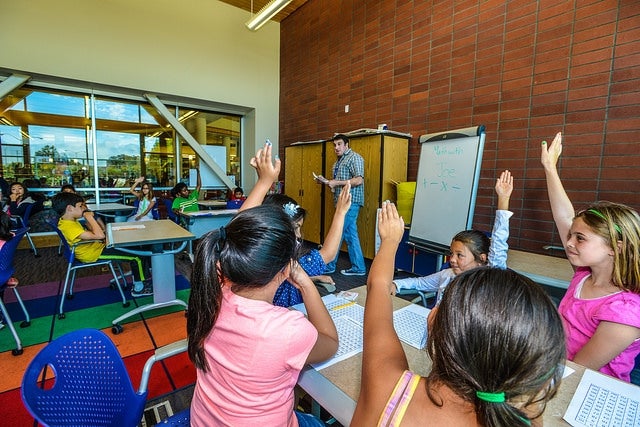FAQs
Q: What is Community Collaboration for Children’s Success?
A: The Community Collaboration for Children’s Success (CCCS)
initiative aims to produce better outcomes for children in San
Mateo County by identifying barriers to success and interventions
in high-need neighborhoods.
The planning process works with youth and families who live in
selected neighborhoods to identify strategies and interventions
to address issues prioritized by community members. Through the
process, community members will create community plans that
prioritize strategies to support youth success. Once the
planning process is complete, the CCCS initiative will continue
by supporting the implementation of the neighborhood
plans.
Q: What is the origin of this initiative?
A: County leaders identified that a large portion of youth clients in high-intensity programs such as Juvenile Probation, Child Welfare and Behavioral Health and Recovery programs were coming from a few neighborhoods in the County. The leaders recognized that a place-based effort would help understand the particular needs and challenges in the communities where youth and families lived. The planning process works directly with youth and the caregivers of young children to identify challenges and to craft solutions that will better support children and youth in these neighborhoods and throughout the County. The initiative’s long-term goals are to achieve better outcomes for children and and youth and help prevent the circumstances that limit young people’s ability to succeed.
Q: How are the communities of focus identified for this initiative?
A: Neighborhoods were identified because they have both high youth need and high capacity for deep community engagement and participation. A Youth Need Index and Youth Planning Readiness Index were calculated using agency and community data.
Q: Where and when will the planning process take place?
A: In 2018-2019, the CCCS planning process will result in neighborhood plans that support children and youth success in four communities within North Fair Oaks/Redwood City, South San Francisco, East Palo Alto, and Daly City. Community plans will be finalized in June of 2019.
Q: How will the planning process affect the County overall and communities that are not the four focus neighborhoods?
A: Cross-cutting findings (e.g., community strengths, barriers to children’s success, prioritized strategies) that emerge from the planning process in multiple neighborhoods will be presented to help the County understand challenges that exist for children and youth throughout the County of San Mateo.
Q: What are the deliverables or products of the CCCS planning process?
A: At the end of the planning process, each of the four focus neighborhoods will have a 4-5-year plan to support children’s success. Each plan will include:
- an asset map for the neighborhood;
- a summary of the community’s needs and strengths;
- a list of barriers to children’s success identified through the data collection;
- prioritized community goals and outcomes;
- community-supported strategies/interventions that will help achieve the prioritized outcomes; and
- indicators to track progress towards outcomes.
Additionally, the planning consultants will present a summary report to the County Board of Supervisors that identifies findings relevant across the neighborhoods.
Q: What is Trauma-Informed Planning and why is it important?
A: The concept of collective trauma acknowledges that trauma can
occur on a community-wide scale as a result of pervasive
violence, concentrated poverty, segregation, neglected
infrastructure and structural racism. Community-level lack of
trust, disengagement with civic processes, and an absent sense of
community ownership are all outgrowths of historic and systemic
community-wide trauma.
Trauma-informed community building (TICB) offers an approach to
strengthen power and resilience in communities in the face of
pervasive trauma. TICB recognizes community trauma, fosters
resilience, and strengthens social connections.
Q: Who is involved in the planning process? Who will make decisions?
A: Leadership for this initiative comes from the Board of
Supervisors, County Manager’s Office, Health System, Human
Services Agency, Department of Probation and County Office of
Education.
A Countywide Steering Committee comprised of representatives of
County agencies, relevant commissions and initiatives, and select
community based organizations helps guide and shape the planning
process.
At the neighborhood level, local stakeholders and leaders
guide the initiative in formal Neighborhood Leadership
Groups to ensure the process takes the unique needs and desires
of individual communities into account. Community Champions
connect the initiative with young people and their families on
the ground, who provide valuable input on the assets and
challenges in their community.
Q: What decisions were made prior to the CCCS planning process?
A: The County Leadership Group (comprised of the County’s Board of Supervisors and Executive Leaders of the County Manager’s Office, Health System, Human Services Agency, Probation Department, and Office of Education) decided the overall project approach, the four focus neighborhoods and sequence of plans, and the amount of funding for the planning process.
Q: How can I get involved? Who can I contact for more information?
A: Please email Maeve Johnston for more information.


